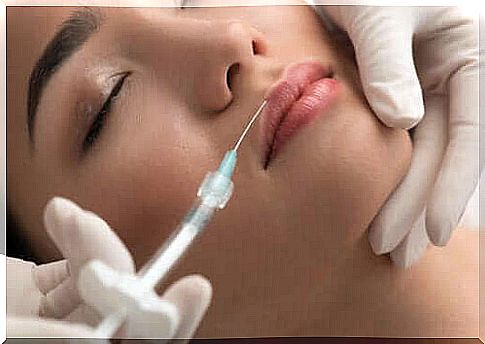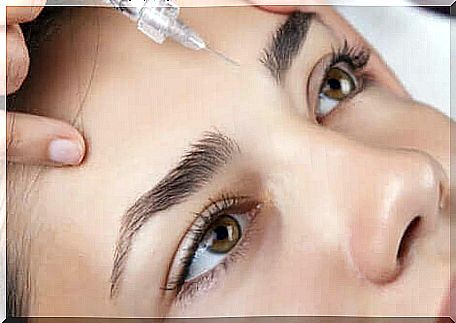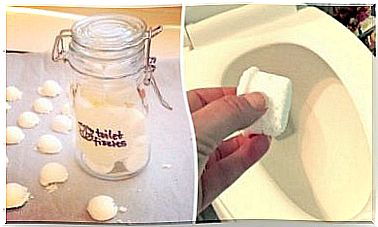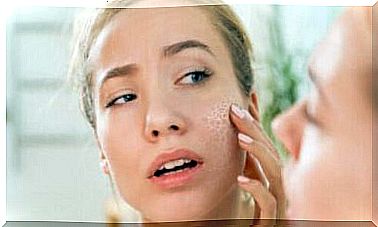Side Effects Of Hyaluronic Acid
Hyaluronic acid is a biocompatible product that has multiple favorable results in the field of aesthetics. Its side effects are varied, but preventable.

Nowadays, we talk more about the side effects of hyaluronic acid because it is one of the most popular products to regenerate the skin and give it volume in areas that have lost certain tissues. Its use in the field of beauty and personal care has increased.
For best results, it is necessary that the person receiving the substance is aware of certain recommendations in order to avoid adverse reactions. Do you know these different recommendations? What are the side effects of hyaluronic acid? Find out in this article.
Side effects of hyaluronic acid
After applying hyaluronic acid, it is important to follow a set of indications in order to avoid side effects. These reactions are not always a direct consequence of the product. They also occur because the patient has not taken sufficient care of himself or complied with the professional’s prescriptions.
Redness in the area
Erythema in the area, as a side effect of hyaluronic acid, is caused by the same trauma as local injections. Although it also depends on the properties of the product used. It is a transient redness accompanied by a slight inflammation.
This erythema usually lasts between a few hours to 2 days. It is possible to speed up the healing process and use specific creams after the session to stimulate healing.

Hematomas
Usually, a certain amount of hematoma accompanied by inflammation appears. They don’t last more than a few days. These two adverse effects of hyaluronic acid can be minimized by applying firm pressure and ice packs before, after or during the session.
If you are taking unnecessary medications or blood thinners, they should be stopped. According to studies published in The Journal of Clinical and Aesthetic Dermatology, the incidence of bruising following the application of dermal fillers is between 19 and 24%.
Asymmetries
Asymmetries can occur due to the amount of hyaluronic acid used. There is then a momentary difference in the volume of the face on each side of the nose, for example with one side larger than the other.
Allergic reactions and hypersensitivity
These reactions are infrequent because hyaluronic acid is a biocompatible product. In other words, the body assimilates it without identifying it as an external agent, because its components are similar to natural substances in the body. However, it is possible to observe allergies due to local irritation.
Skin necrosis
The skin necrosis by compression or obstruction of a blood vessel is a rare complication. The most sensitive area is between the eyebrows because this region is irrigated by the supra-trochlear artery. The latter does not have a strong collateral circulation and therefore cannot receive blood from elsewhere.
Plastic and Reconstructive Surgery recommends aspirating with the needle before injecting the product in a constant back-and-forth motion. This can avoid this complication.
Short-term side effects of hyaluronic acid
Some side effects of hyaluronic acid occur in the short term and do not occur immediately like the ones just mentioned. This means that a few days pass after the injection before the effects become evident.
Palpable or visible nodules
Nodules and lumps are common complications resulting from the use of dermal padding. They can be inflammatory or non-inflammatory. Nodules that appear late and are present between 4 weeks and 1 years or more, are usually inflammatory. This is the immune response to hyaluronic acid.
According to the American Journal of Clinical Dermatology , although inflammatory nodules are more common with permanent fillings , they have also been reported to develop after using temporary fillers.
Activation of the herpes simplex virus
In cases where the intervention is in the labial area of people with herpes, it is essential to carry out anti-herpes prophylactic treatment. Indeed, one of the undesirable consequences of hyaluronic acid is the activation of the infection which lodges in the nerves of the face.
Long-term side effects of hyaluronic acid
Complications can occur after several months or years since the application of hyaluronic acid. These are long term side effects. In general, it is difficult to identify their orientation towards treatment because the intermediate time confuses the diagnosis.
Granulomas
The granulomatous foreign body reaction can develop years after the injection. This process may be asymptomatic or be accompanied by erythema and edema.
Persistent foreign body reactions can be treated with intralesional corticosteroid injections. However, the American Society for Dermatology Surgery , through the studies performed, places hyaluronidase as a possible therapy for this side effect.

The migration of hyaluronic acid
One of the possible complications associated with the injection of soft tissue fillers is the migration of hyaluronic acid. When evaluating any nodules, masses or swelling on the face, it is important to take into account that the applied substance may migrate to an area far from the injection site. It can also persist in the tissue for years.
The importance of consulting a professional
There are many strategies to decrease the risk of complications from filling with hyaluronic acid. Therefore, a good working knowledge of the different side effect profiles is essential on the part of a professional.
Finally, although adverse reactions are rare with correct injection, patients should be aware that unforeseen sequelae can occur. It is therefore essential to be informed and to respect the indications before and after the sessions.









